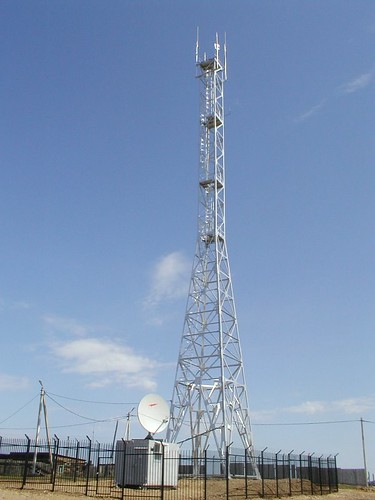GSM Satellite Backhaul
Remote regions and developing nations are seeing a massive expansion in their GSM networks. Nigeria, for example, has only 1.25 million landline phones, but more than 30 million mobile subscribers. This presents a number of challenges: foremost, how do you expand a network to remote places that lack the  infrastructure for conventional GSM networks?
infrastructure for conventional GSM networks?
The solution: satellites, of course! In Papua New Guinea, SES NEW SKIES signed a contract with the national telecom company, Telikom Papua New Guinea, to provide GSM backhaul services using its NSS-5 spacecraft. Details from Cellular-News:
The NSS-5 satellite capacity will allow Telikom PNG to expand its GSM services into new regions and provide telephone services over mountainous terrain by providing GSM backhaul between a large number of sites around the country back to the capital Port Moresby.
States Scott Sprague, Senior Vice President Global Sales of SES NEW SKIES: "The ubiquitous coverage of the NSS-5 satellite allows Telikom Papua New Guinea to significantly increase its GSM service area across the rugged geography of Papua New Guinea. SES NEW SKIES is proud to assist the country’s premier telecommunications provider to offer vital communications services to widespread, mainly rural populations and across terrains that make it difficult to develop even basic transportation infrastructures."
Remote deployment is only one use of satellite backhaul services. As satellite modem manufacturer Radyne expains, two other uses could prove critical: temporary installations during disaster recovery (when the broadband infrastructure has been damaged) and when a rapid deployment is required.
Communications technology giant Cisco hasn’t ignored this developing industry (abbreviations in description have been expanded):
At the cell site, GSM traffic is compressed and aggregated with [Universal Mobile Telecommunications Service (UMTS)] traffic by the [mobile wireless router]. The result is lower bandwidth aggregated traffic that is routed to the satellite modem and transmitted to the other side. Depending on actual T1/E1 link utilization for both GSM and UMTS, Cisco RAN Optimization can reduce the bandwidth required on the satellite link up to 50 percent, providing significant savings in [operating expenses].

